Science flows like an endless river of questions, propelled by humanity’s persistence to solve them. How do our geographic origins shape our immune systems? Can light be deftly controlled at the nanoscale? What materials would it take to safely contain future power plants, or keep advanced aircraft aloft?
Today, researchers at A*STAR continue to push frontiers in the countless challenges and mysteries that occupy a diverse range of scientific and engineering fields. From stem cell biology to additive manufacturing, A*STAR’s scientific talents are making breakthrough discoveries and advancing translational efforts that bring cutting-edge insights from the lab into the real world.
In recognition of the outstanding contributions, leadership and impact of leading A*STAR researchers for the local and international research community, A*STAR annually awards the A*STAR Fellowship and Distinguished Fellowships on a highly competitive basis. The Fellowships recognise and honour the efforts of individual researchers who have showcased technical and scientific excellence in their respective fields, as well as stepped into leadership roles at the agency.
In this issue of A*STAR Research, we speak to this year’s A*STAR Distinguished Fellow and nine A*STAR Fellows, who share the scientific challenges they hope to solve, and their aspirations for the future of their work.
2025 A*STAR Distinguished Fellow
Institutional leader of global distinction

Jinghua Teng
Senior Principal Scientist,
A*STAR Institute of Materials Research and Engineering (A*STAR IMRE)
Light is more than illumination—it carries information, forms our perception of the world and shapes technologies. For Jinghua Teng, the challenge is to uncover novel nanostructures that can bend, confine and convert light in ways that were previously unimaginable with classical lenses and bulk materials. His goal is to push boundaries in optical communications, information processing, imaging, computing and sensing.
Teng leads the Optoelectronics Group at A*STAR IMRE, where his team integrates 2D materials and 2D metamaterials across a wide range of wavelengths. Their landmark achievement in super-resolution imaging has led to the first ultrathin, supercritical flat lens capable of both superfocusing and wide-field imaging, with a record-long working distance. In collaboration with A*STAR spinoff company Metaoptics Technologies, they have since developed a direct laser writing system based on their supercritical lens designs for higher-resolution lithography.
At the National Semiconductor Translation and Innovation Centre (NSTIC), Teng works with a team to tackle several grand challenges in flat lens R&D. By engaging the entire industrial value chain, the researchers are turning innovative flat lens designs into commercially applicable prototypes for large-scale manufacturing. The work could establish NSTIC as a global leader in flat optics and open new horizons for Singapore’s optics and electronics sectors.
Supported by the National Research Foundation’s Competitive Research Programme, Teng is also leading efforts to develop mid- to far-infrared technologies using 2D and other quantum materials—advances that could transform fields such as medicine, environmental monitoring, communications and security.
“We will continue to push the boundaries of how light can be controlled and utilised at the nanoscale, enabling faster, smaller and more energy-efficient optics and optoelectronics with enormous transformative potential.”
2025 A*STAR Fellows
Team leaders of national scientific excellence
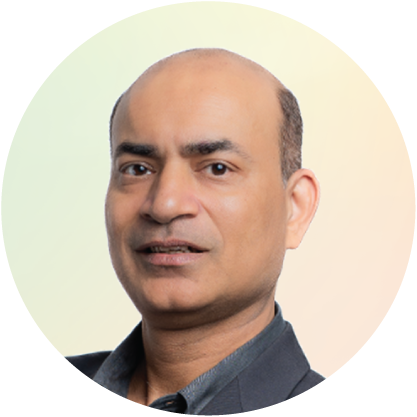
Amit Singhal
Senior Principal Scientist,
A*STAR Infectious Diseases Labs (A*STAR IDL)
At first glance, diabetes and tuberculosis (TB) seem unrelated: one is a metabolic disorder, the other a bacterial infection. But in 2014, while screening for potential drugs that target key energy-metabolising pathways in TB pathology, Amit Singhal and colleagues found that metformin—a low-cost drug long used for blood sugar management in diabetes—could inhibit the growth of Mycobacterium tuberculosis, even when the bacterium had entrenched itself within host cells.
Singhal’s pioneering work has since led three phase 2 clinical trials on metformin’s efficacy as a TB adjunct therapy. In the METRIF trial in India, investigators found that adding metformin to standard anti-TB treatment reduced excess inflammation and limited lung tissue damage in patients with TB. Two other trials—METHOD and DRTB-HDT—are evaluating metformin’s effects in patients with HIV/TB and drug-resistant TB infections; successful outcomes from these will set the stage for phase 3 trials in six countries in 2026.
At A*STAR IDL, Singhal’s group is also probing the mechanisms used by respiratory pathogens to sidestep host immune responses, drawing on biochemical, microbiological, molecular biology and omics approaches. Their work on the crosstalk of immuno-metabolic circuits and epigenetic reprogramming has revealed new protein targets for the next generation of host-directed therapies (HDT) against respiratory infections.
“The A*STAR Fellowship will support our research activities in lung-directed inhalable HDTs for acute and chronic inflammation; new antibiotics to face growing global antimicrobial resistance; and pathogen-agnostic host-targeted approaches as alternative therapeutic avenues.”

Anand Andiappan
Principal Scientist,
A*STAR Singapore Immunology Network (A*STAR SIgN)
Two-thirds of the world’s people live in Asia, yet Asian populations remain underrepresented in biomedical research compared to their Western counterparts. Studies show that the genetics and pathology of many diseases can be quite different between these groups, raising questions about whether treatments optimised for one group will be as effective for another.
As a translational immunologist, Anand Andiappan aims to understand the molecular-level nuances of immune dysregulation among Asian communities in Singapore. To date, Andiappan’s team at A*STAR SIgN has uncovered significant population-level differences in the immune mechanisms of allergic conditions such as atopic dermatitis (AD) and allergic rhinitis. These variations include the roles of distinct T helper cell classes, skin composition, age of disease onset, responses to medication, and the range of allergen exposure.
Andiappan and his colleagues are now building on these insights, exploring how they can be leveraged for early diagnosis, improved treatment outcomes and preventive care. As part of the national-level Atopic Dermatitis Program for Patients (ADEPT), the team is conducting molecular characterisation of AD patients using blood and skin samples. Because AD symptoms often appear similar across individuals, the researchers aim to pinpoint underlying immunological differences that could guide more tailored treatments and new therapeutic strategies.
“We aim to work with clinicians and industry partners to understand patient diversity and find the right treatment for the right patient. We want to move from ‘one-size-fits-all’ approaches to personalised ones that reduce clinical burden and improve quality of life.”
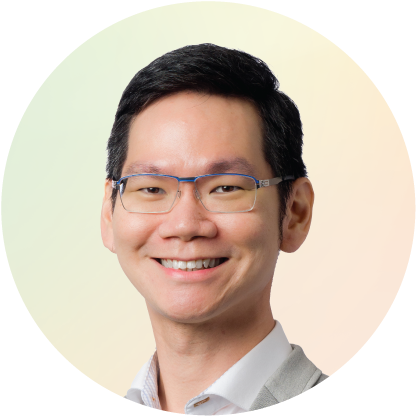
Kenneth LAY
Principal Scientist,
A*STAR Skin Research Labs (A*STAR SRL)
Like blank tiles in a game of Scrabble, stem cells can be turned into almost any cell type in the body. Their potential offers hope for regenerative medicine, restoring damaged tissues and organs with cells less likely to be rejected by the immune system.
To realise that possibility, researchers must first address key questions about stem cell stability. How firmly do stem cells retain their new identities? How well do they integrate into target organs? And how can scientists ensure they behave as intended?
At A*STAR SRL, Kenneth Lay and colleagues are making headway in answering these questions. Their recent work shows that even after recovering from inflammatory insults, skin stem cells do not behave as they once did. While their plasticity helps the cells adapt to changing micro-environments, it may also limit their ability to regenerate new skin—insights that could inform strategies to curb the recurrence of chronic inflammatory conditions such as eczema.
Lay’s team is also streamlining methods to produce stem cell-derived skin organoids. By shortening the time needed to generate these organoids, they are taking small but important steps towards cost-effective grafts for patients with severe burns or inherited skin disorders.
“Our long-term goal is to create a nurturing environment where students, postdocs and research staff can inspire, discover and translate biological findings into novel stem cell-based strategies to treat skin conditions and sustain skin health.”
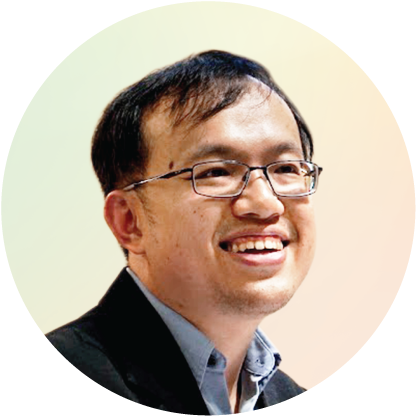
Kok Hao Chen
Principal Scientist,
A*STAR Genome Institute of Singapore (A*STAR GIS)
The road to breakthrough science is often paved with failure. For Kok Hao Chen, the successful development of MERFISH a decade ago took a dogged amount of faith, persistence and support from collaborators and mentors, leading to what would become a foundational tool in spatial omics today: a highly multiplexed RNA profiler that reflects RNA’s location within native tissues, producing crisp images with a high level of agreement with next-generation sequencing tools.
MERFISH and related tools continue to make waves in biomedical research, uncovering new insights in brain development, brain ageing and cognitive decline in Alzheimer’s disease and Down Syndrome. The tool’s applications are also rapidly expanding beyond neuroscience to fields such as immunology, gastroenterology and oncology. Chen believes that in combination with spatial functional perturbation approaches for validation, MERFISH will aid the identification of more meaningful drug targets and molecular markers, helping shape the future of drug discovery, molecular diagnostics and precision healthcare.
Moving forward, a key goal for Chen’s lab at A*STAR GIS is to employ advanced MERFISH-like tools in studying the diversity and regulation of transcription and translation at the single-molecule level, providing views of how these factors vary among cell types and tissues at subcellular resolution.
“There’s a saying: “God is in the details.” I hope that by systematically re-examining transcriptional and post-transcriptional processes in light of their spatial organisation, we can uncover fundamental new insights that advance molecular biology and redefine precision therapeutics.”
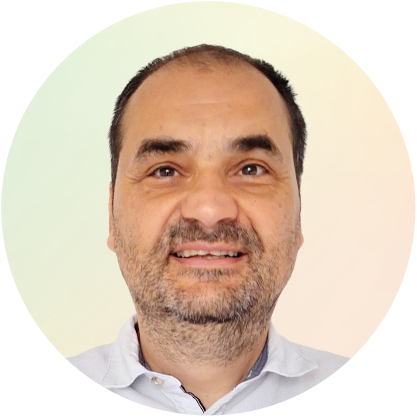
Mile Šikić
Group Leader (AI in Genomics),
A*STAR Genome Institute of Singapore (A*STAR GIS)
If the entire human genome were printed on paper, it would produce a stack taller than the Statue of Liberty. Making sense of that vast code has long been a challenge, but artificial intelligence (AI) is now reshaping the field of bioinformatics. By improving the quality of long-read sequencing, AI is enabling scientists to reconstruct and scan through a sea of genetic code with unprecedented accuracy.
Mile Šikić was among the pioneering researchers to show that overlapping reads and correcting them with AI models could improve long sequencing read quality by up to 100-fold. At A*STAR GIS, Šikić and colleagues developed HERRO, a transformer-based error correction model which enabled automated reconstruction of complex human chromosomes.
Another contribution to the field by Šikić’s team is RiNALMo, an award-winning RNA-focused large language model. They demonstrated that RiNALMo and similar models can deliver significant advances in RNA-specific tasks, including more accurate predictions of RNA secondary structure—a key determinant of RNA function.
Building on these breakthroughs, Šikić and team plan to reconstruct and elucidate the evolutionary trajectories of cancer genomes using advanced AI models, and to optimise RNA molecules for therapeutic use in cancer and cardiovascular disorders.
“[Our AI models] position Singapore at the forefront of global research: among the three biologically essential macromolecules—protein, DNA and RNA—Singapore now leads in the development of RNA foundation models.”
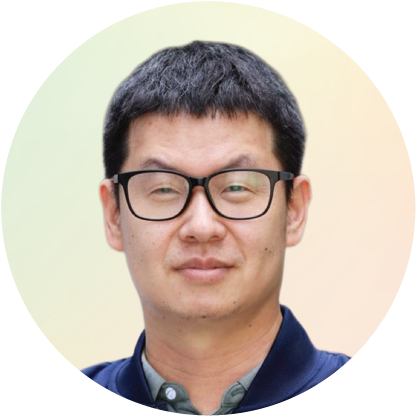
Pei Wang
Principal Scientist,
A*STAR Institute of Materials Research and Engineering (A*STAR IMRE)
A*STAR Strategic Research & Translational Thrusts - Future Energy Acceleration & Translation (A*STAR SRTT-FEAT)
From planes to power plants to smartphone batteries, advanced metallic materials underpin almost every sector of modern technology. Combined with additive manufacturing, they offer unprecedented design freedom, allowing engineers to create complex, lightweight and high-performance structures that were previously impossible to construct.
For Pei Wang, this convergence not only drives innovation in cutting-edge industries, but also delivers lasting economic and social impact through energy-efficient products and sustainable manufacturing. Wang and colleagues at A*STAR IMRE and A*STAR SRTT-FEAT, have developed new structural metal alloys that address long-standing production challenges, drawing on diverse expertise and a shared vision for advancing additive manufacturing.
In parallel, the team’s work on accelerated materials discovery and manufacturing has fundamentally changed existing frameworks for alloy design. By moving beyond conventional trial-and-error to high-throughput artificial intelligence (AI)-guided approaches, the researchers have been able to rapidly design, prototype and evaluate new alloys. These innovations led to patents and opened new pathways for advanced alloy development and translation with industry partners including Makino and TE Connectivity.
“Beyond the lab, I aim to translate AI-driven approaches in materials discovery and manufacturing to industry, enabling faster, smarter and more cost-effective alloy design. The A*STAR Fellowship will be instrumental in building these AI-enabled platforms, expanding collaborations and accelerating the translation of our research into tangible impact.”
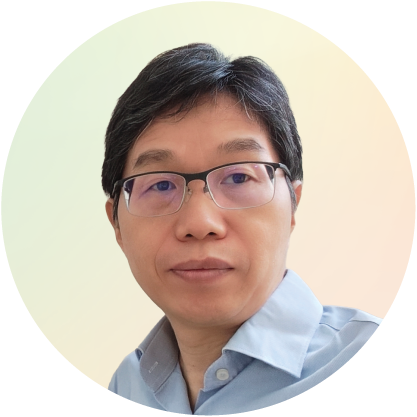
Shijie Wang
Senior Principal Scientist,
A*STAR Institute of Materials Research and Engineering (A*STAR IMRE)
A*STAR Strategic Research & Translational Thrusts - Future Energy Acceleration & Translation (A*STAR SRTT-FEAT)
From the first clay bricks to today’s turbine engines, ceramics have shaped technological progress for centuries. Modern advanced ceramics drive both innovation and sustainability, offering extreme temperature resistance, high strength and excellent electrical insulation. Their exceptional properties make them indispensable as lightweight and durable components in aircraft and automobiles; biocompatible implants in healthcare; and advanced solutions in power generation, energy storage and filtration systems.
At A*STAR IMRE and A*STAR SRTT-FEAT, Shijie Wang focuses on creating advanced ceramics with enhanced performance or novel functions, aiming to create more robust, multifunctional devices that transform industries and improve everyday life. His work aims to bridge the gap between materials discovery and application in various sectors including aerospace, defence, semiconductors and clean energy.
Wang’s patented innovations to date include a novel wear-resistant smooth coating for aircraft engine components, which extends their service life while cutting overall production costs. He also developed a series of tungsten coatings for ceramic tiles that can withstand the extreme neutron and plasma irradiation of fusion reactors. This technology has already been licensed to a local company to produce tungsten-coated tiles for the fusion industry.
“My long-term vision is to establish a leading research lab focused on developing novel advanced ceramic materials and processes for use in harsh environments, spanning the aerospace, defence and clean energy sectors.”

Ying Swan Ho
Senior Principal Scientist,
A*STAR Bioprocessing Technology Institute (A*STAR BTI)
As a chemical engineer by training, Ying Swan Ho did not expect to find herself at the forefront of metabolomics when she returned to A*STAR BTI after her PhD degree. Yet a pivotal opportunity arose: to establish a metabolomics platform that could transform how scientists understood cell culture systems at a time when few tools existed to deeply characterise how cells utilised nutrients.
Today, as A*STAR BTI’s Division Director of Analytical Science and Technology, Ho leads a multidisciplinary team that integrates advanced analytics, omics technologies and computational modelling as they tackle pressing challenges in biologics and cell therapy development. Her group’s work spans three key areas: optimising bioprocesses, uncovering novel therapeutic targets through metabolic profiling, and supporting regulatory science for next-generation modalities such as mRNA and cell therapies.
Among her flagship initiatives is the BioStream programme, a joint effort with the National University of Singapore to accelerate lead optimisation for biologics through artificial intelligence and rapid experimental-analytical platforms. Ho also co-leads ASCENT1, an inter-agency collaboration with Singapore’s Health Sciences Authority to build regulatory science capabilities for novel biotherapeutics. Her team aims to understand how mRNA-lipid nanoparticle heterogeneities affect efficacy and safety.
“It’s an exciting time to be at the intersection of science, technology and translation. The A*STAR Fellowship will help us nurture talent and grow a strong pipeline of researchers who can drive innovation in analytical science and precision biomanufacturing.”

Youxiang Chew
Principal Scientist,
A*STAR Advanced Remanufacturing and Technology Centre (A*STAR ARTC)
Directed energy deposition (DED), a specialised form of industrial 3D printing, first captured Youxiang Chew’s attention during his PhD degree as a promising remanufacturing process. He has pursued DED ever since for its unique ability to fabricate and remanufacture large, complex and high-value parts. What drives Chew’s research is the technology’s direct relevance to industry—reducing lead times, extending component lifespans and enabling new material combinations that support sustainability.
In collaboration with Mencast, a Singapore-based marine propulsion system manufacturer, Chew and colleagues at the A*STAR Singapore Institute of Manufacturing Technology (A*STAR SIMTech) and A*STAR ARTC delivered the region’s first qualified additively manufactured ship propeller, certified by global maritime classification agencies. The team is also building capabilities in remanufacturing high-temperature nickel-based superalloy components through the Smart Manufacturing Joint Lab 2, a partnership between A*STAR, Rolls-Royce and Singapore Aero Engine Services.
Looking ahead, Chew is aiming for even greater precision and impact. He envisions next-generation remanufacturing methods that can achieve precision wire-based deposition while overcoming typical trade-offs between build rate and quality. Chew also plans to explore novel hybrid manufacturing pathways where DED is more effectively combined with other additive processes and forged components through deep-penetration electron beam welding.
“We aim to position Singapore as a leader in smart and sustainable manufacturing. The A*STAR Fellowship will provide a platform for pursuing high-risk, high-reward research while translating outcomes into industry impact, talent development and national competitiveness.”





